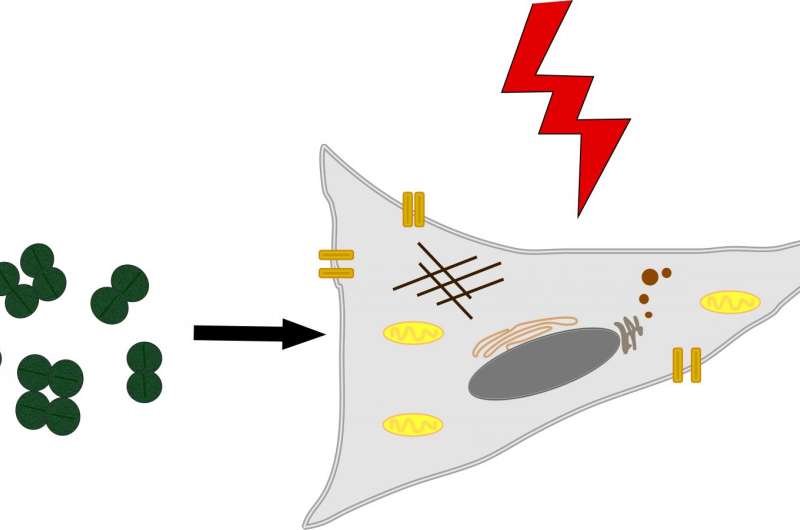Red light controls signaling in human cells

Optogenetics now enables the development of new methods that can be used like light switches to turn on and off specific processes in cells. Optogenetic methods are based on the isolation and modification of light-sensitive proteins in a first step and their subsequent incorporation into an individual target cell or an entire tissue.
A recent paper by IST Austria scientists, published in the Angewandte Chemie International Edition journal on April 21, 2016, describes successful red light experiments. Compared with the blue light mostly used in current approaches, red light has major benefits, particularly with respect to applications in model systems for diseases. Red light can penetrate deep tissues and can be employed without surgery in a non-invasive way; it has minimal cytotoxicity for human and animal tissues and has no effects on fluorescent proteins. Often used for various applications in research labs, florescent proteins tend to be activated or bleached by blue light. Although red light has so many advantages over blue light, there are very few red light-based optogenetic tools currently available.
Microorganisms as rich source for unique proteins
For the light-sensitive protein, IST Austria Professor Harald Janovjak and his research group chose a photoreceptor which can be activated by red light. This photoreceptor was found in the cyanobacterium Synechocystos which was already first described in 1968. In their study the authors modified the receptor and fused it with a mammalian receptor, which has been found significant for many diseases such as cancer, Alzheimer, Parkinson and diabetes. Later, they successfully demonstrated in experiments that the red-light activation of the fused receptor could activate a signal pathway that plays a crucial role in cell division.
A light switch for cell division
As a rule, cell division is activated by so-called growth factors. They are the reason why two receptors undergo a binding and activation process, marking the start of cell division. The researchers managed to induce the binding and activation process by combining the receptors and using red light. Additionally, they showed that the fused receptor could be activated by red light even across tissue in cells which are used in model studies for diabetes.
Harald Janovjak and his co-authors, including PhD student Eva Reichhart, expect huge improvements in future research: "Specific receptors are less active or numerically limited in such diseases as Alzheimer, Parkinson, and diabetes. In the future, scientists might develop an approach based on gene therapy that could restore the normal signal pathways by using fused receptors—without recourse to surgery."
More information: Eva Reichhart et al, A Phytochrome Sensory Domain Permits Receptor Activation by Red Light, Angewandte Chemie International Edition (2016). DOI: 10.1002/anie.201601736
Journal information: Angewandte Chemie International Edition
Provided by Institute of Science and Technology Austria




















